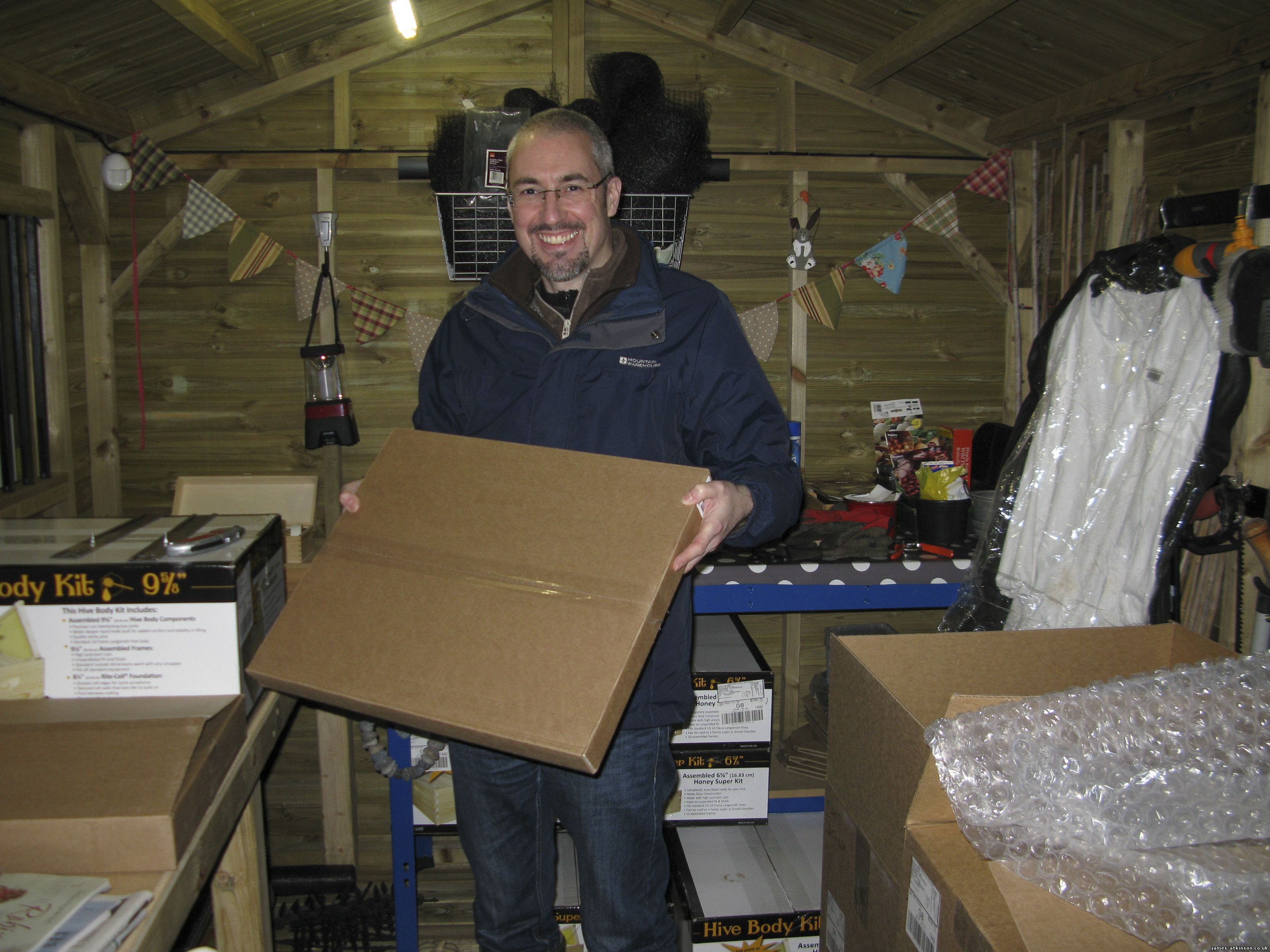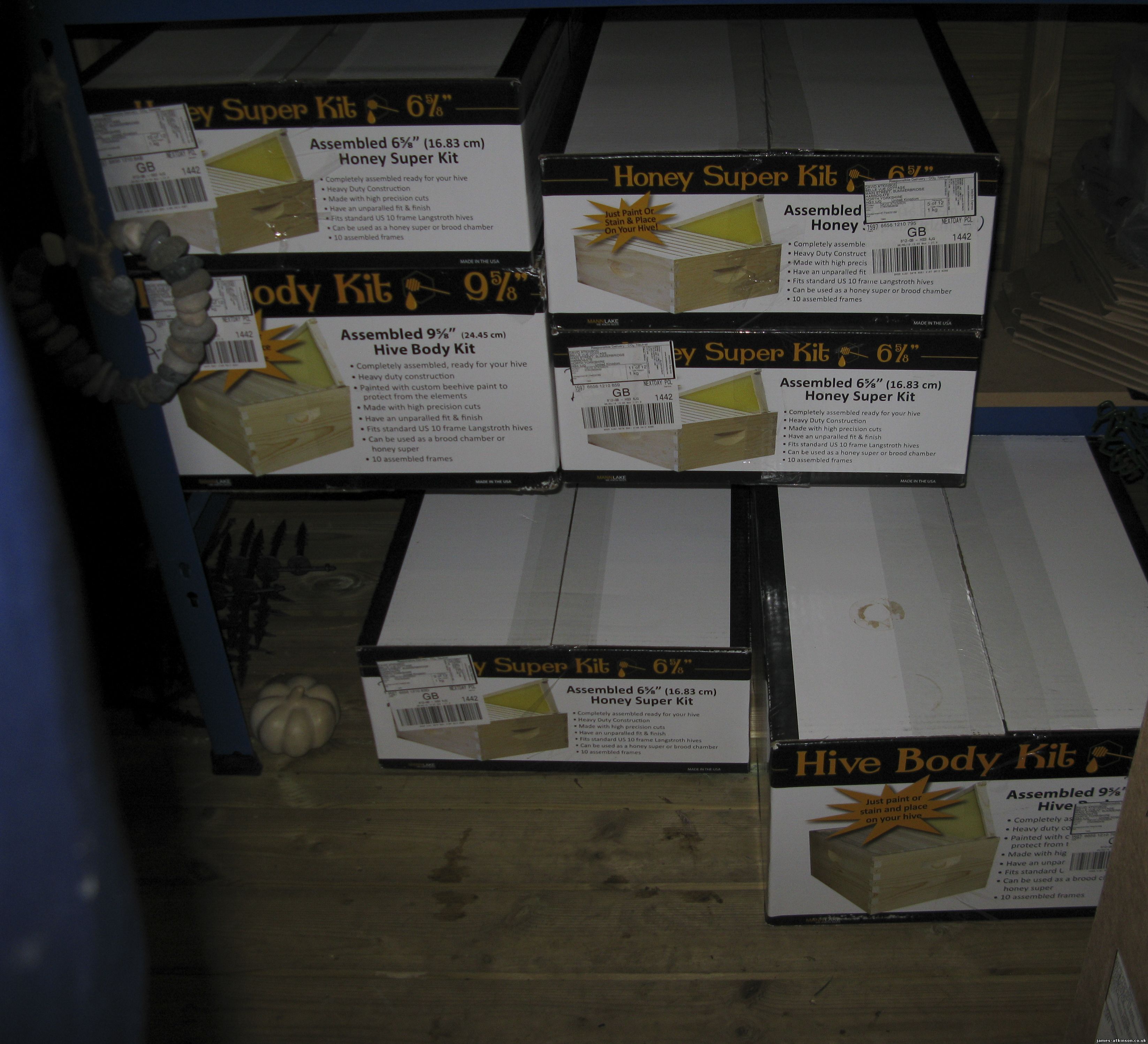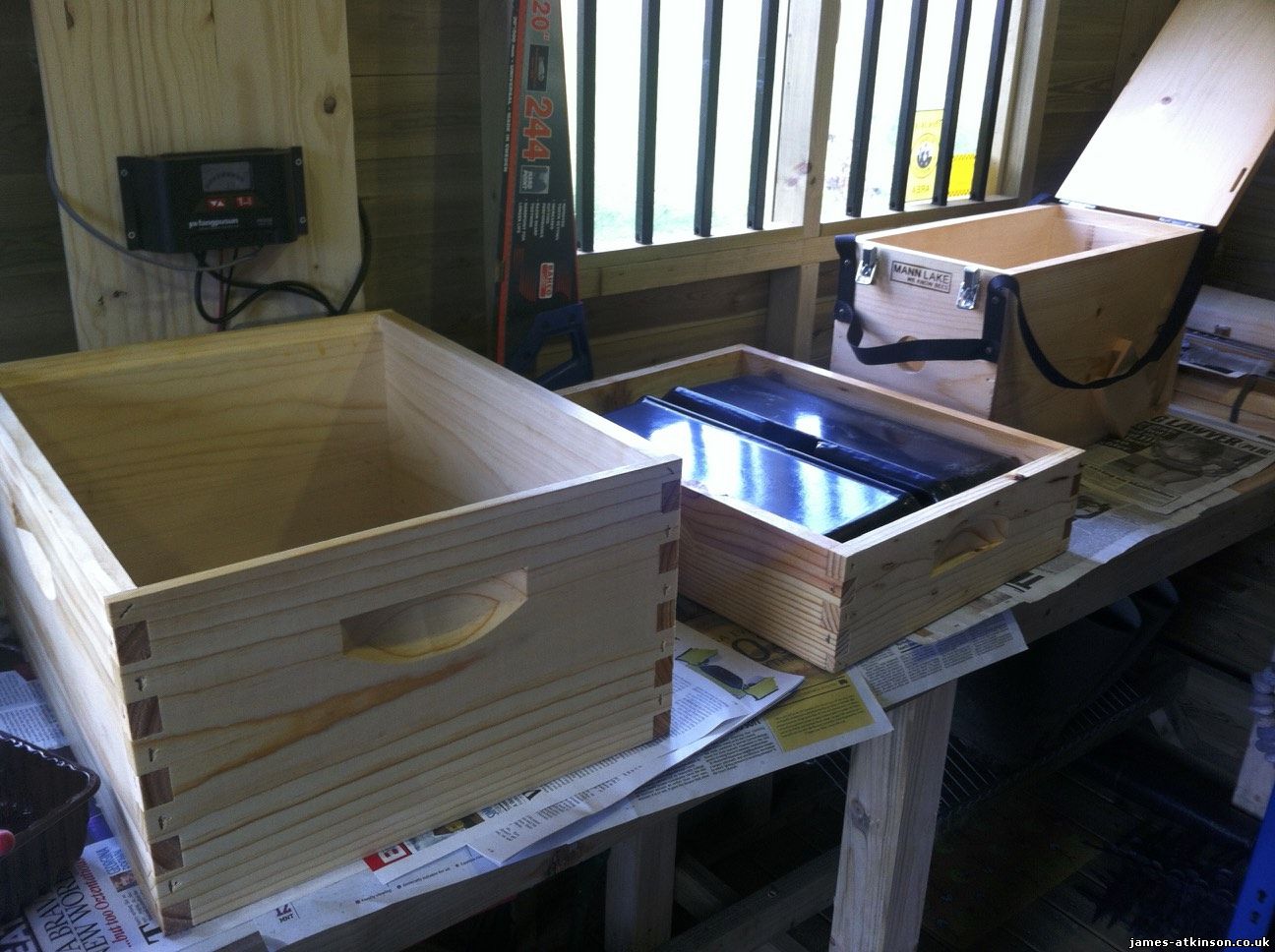0:16 AM My beekeeping is getting into gear |
| Well it is a few months before my beekeeping adventure begins and I thought it was time to buy some items. My intention was to choose the hive design and stick to that particular form. This is always recommended so all frames and products can be interchangeable. I previously ordered 2 nuclei of bees. These are Buckfast bees due to their nature. It strange really that my intention was always to get pure black bees due to the exhibition Julia and I saw at The Eden Project. This was promoting the Black Bee Project where the original pure strain was trying to be brought back. Black bees are hardy and well mannered. When I was deciding to which bees to get I read a great deal of literature. I also got advice from the tutors at RHS Harlow Carr last year when I attended the beekeeping course. I even emailed the project itself. It sounded like the pure strain is being brought back but is next to impossible to get and keep pure. Buckfast bees are a bred strain that may help me in the long term. They have a low tendency to swarm meaning that chances are they, hopefully, will stay with me as I am learning. The bees got their name from Buckfast Abbey where ‘Brother Adam’ bred the strain to be resilient to the disease that was wiping colonies out. I will need to understand the basic principals of ‘Integrated Pest Management’ (IPM). This will prove interesting and I am expected a few challenges. The varroa destructor mite is a main enemy of the European bees. Julia and I have already seen a bee with vorroa on it at the allotment. They are a terrible threat to honey bee colonies and pest management is a process that the beekeeper needs to organise in order to minimise the risk. I’ve gradually built up gear. A colleague at work had in-laws who were selling some items. I bought a bee suit and some bits and pieces. I also got some items from a UK company. These are tools and smokers, objects that will be needed and are the apparatuses of every apiary. I found that the best hive for me is a Langstroth. The most common UK hive is called a British National and quite a few clubs used them. The Langstroth is the most common in the world, which made my mind up. It is a simple hive and a company called ‘Mannlake’ has come into the country from America and in doing so has brought well-priced hives and accessories. There is another great company that has been in the UK for years called ‘Thornes’ but I decided my choice of hive would need to be cheaper in the long run. The hives are pine instead of cedar that means that they have to be treated with a preservative or painted. Cedar has natural oils that usually do not need treating but pine is a softwood that needs care. It is also cheaper which means commercial keepers tend to use them. I want the bees to be comfortable and well cared for and usually the bees are not bothered what wood, only that it is dry and warm in winter. I unpack the first shipment!
At the moment I am treating the hive pieces with cuprinol. This is taking a while but I am enjoying it. The only problem is the temperature is quite low at the moment and I am doing it in a shed. Although it is a thick walled shed and there are tea-making facilities, it can come in cold on an evening. I have brought some home to do in the garage but have had no time since bringing them. In the mean time I have also bought some flat pack items and a nail gun. This is so I can start building items up so it will be cheaper in the log term again. I just need to get a move on with getting them all done as the bees will need a home around May or June. I can’t wait! |
|
|
| Total comments: 0 | |



